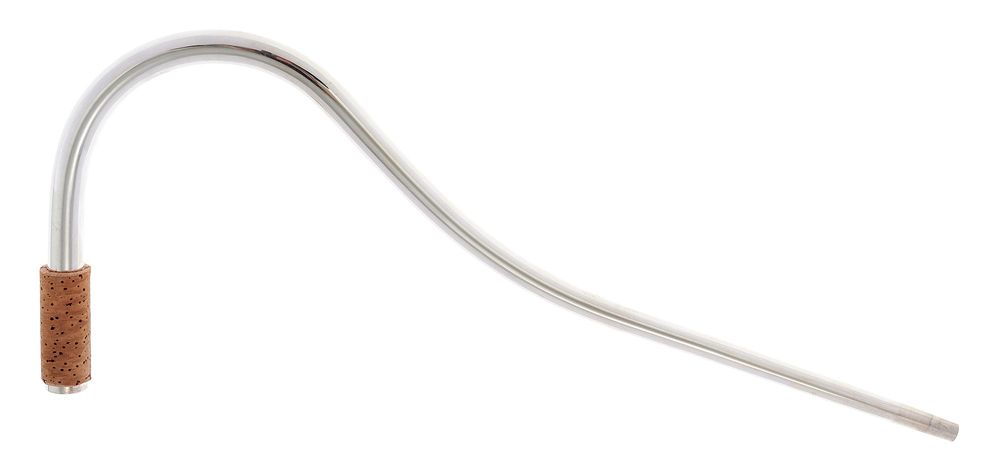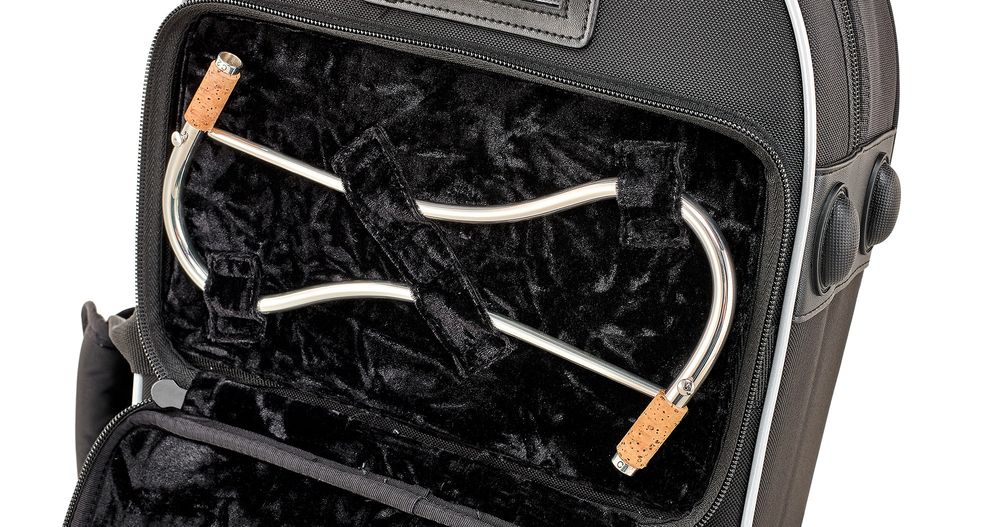6. The S-Bend
This quick rundown covers the key features of S-bends that beginners should know. The S-bend marks the start of the conical structure of the bassoon. It's the first component that transfers the tube's vibration to the bassoon. The S-bend is a conically (hand-)crafted metal tube that generally comes in two different wall thicknesses: thin-walled and thick-walled (affects the tone's responsiveness).
The most common metals used are silver-plated nickel silver, solid sterling silver, and silver-plated brass (influencing both tone response and sound). Additionally, S-bends are available in various lengths (affecting the basic pitch).
The key factors in choosing an S-bend are easy, precise responsiveness across all tones, a full sound, and stable intonation. However, these criteria heavily rely on the tube's qualities. It's advisable to try an S-bend with an averagely good tube.
In general,
The higher quality the S-bend material, the better it fulfills the above criteria.
To simplify,
Good S-bend on a poor bassoon
=
Possible decent outcome. |
|
Poor S-bend on a good bassoon
=
Highly unlikely to yield a decent outcome. |
This notion implies that a "fitting" S-bend can significantly enhance not only the bassoon's value but also the player's comfort. Since S-bends are largely handcrafted, it's important to note:
Not all S-bends are the same!
Beginners should trust their teacher more in the initial selection of S-bends, but ultimately, even beginners feel which S-bend works best for them.
Having 2 S-bends in the bassoon case is standard practice.




